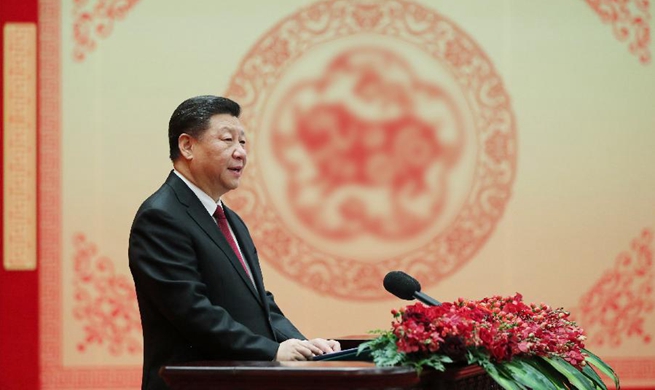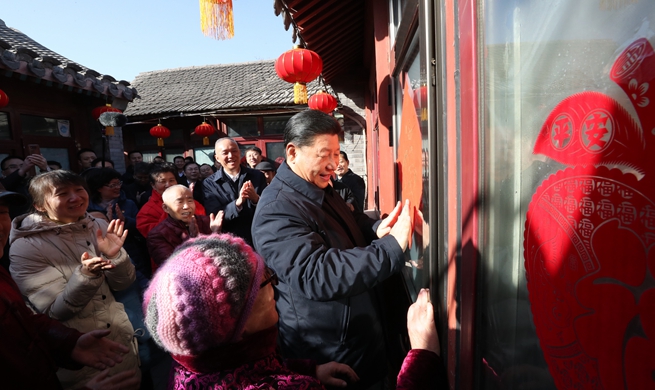ADDIS ABABA, Feb. 5 (Xinhua) -- Ethiopian Yeneneh Beyene has worked as a public transport vehicle driver for more than nine years traveling across the East African country.
Beyene often travels to Adama city, capital of Ethiopia's largest Oromia regional state some 100 km south of capital Addis Ababa, along the main import-export corridor.
As the road that connects Addis Ababa to Adama is part of landlocked Ethiopia's vital road infrastructure linking the capital to Djibouti Port, severe traffic congestion had been a major bottleneck affecting Ethiopia's aspiration to sustain its fast growing economy.
Beyene had for years used the decades-old two-lane road during his routine trip from Addis Ababa to Adama, which he described as a "challenging and tiresome drive."
"The road was very congested, full of trucks and freight vehicles," Beyene told Xinhua on Tuesday. "We often had to wait for hours even for minor traffic incidents."
"What makes the situation even worse was that we had no other alternative road infrastructure than the old line," he said.
As the number of cars that commute along the road increased rapidly together with Ethiopia's soaring demand for import and export commodities over the past decade, the Addis Ababa-Adama road infrastructure had become a major concern for the Ethiopian government as well as private businesses.
According to figures from the Ethiopian Roads Authority (ERA), the two-lane largely dilapidated road was forced to handle in excess of 16,000 vehicles on a daily basis, way over its capacity.
Cognizant to the huge demand for a sustainable road infrastructure connecting the two important cities, the Ethiopian government in 2009 partnered with the Export-Import Bank of China (China Exim Bank) and the China Communications Construction Company (CCCC) to build a modern six-lane toll expressway.
According to Beyene, the "huge burden is now a distant reality" following the commencement of the 85-km expressway in Sept. 2014.
"As much as we hated driving along the old-road infrastructure, we are now very happy with the expressway," Beyene said, adding "A simple one-way drive using the old road line would put parts of cars at greater damage, and significant financial cost."
"It was particularly unthinkable to use the two-lane road at night, mainly due to the road's poor condition," Beyene said as he described the various socioeconomic challenges that emanated from the previous dilapidated road.
Beyeneh's assertion was also backed by figures from the Ethiopian Toll Roads Enterprise (ETRE), showing that more than 22,000 vehicles are currently using the Addis Ababa-Adama expressway on a daily basis.
During the 2018 Ethiopian fiscal year alone, the toll road had served more than 7.8 million vehicles, eventually collecting close to 245 million Ethiopian birr (about 9 million U.S. dollars), according to ETRE.
As the demand increases, ETRE also expects some 8.8 million vehicles during the current fiscal year, with an expected income of 266 million Ethiopian birr.
The Addis Ababa-Adama toll road, as the first expressway in the East African region, is considered as one major outcome of Ethiopia's cooperation with China in the implementation of the China-proposed Belt and Road Initiative.
Ethiopia, as one of the countries cooperating in the implementation of the initiative, had also accomplished Africa's first transnational electrified railway, connecting Addis Ababa with the Red Sea nation Djibouti.
In addition to the 752-km Addis Ababa-Djibouti railway, the East African country had also witnessed a 475-million-U.S.-dollar light rail system in its capital Addis Ababa, which was built with Chinese technology and 85 percent funding from the China Exim Bank.













